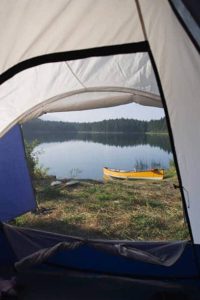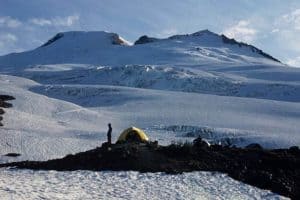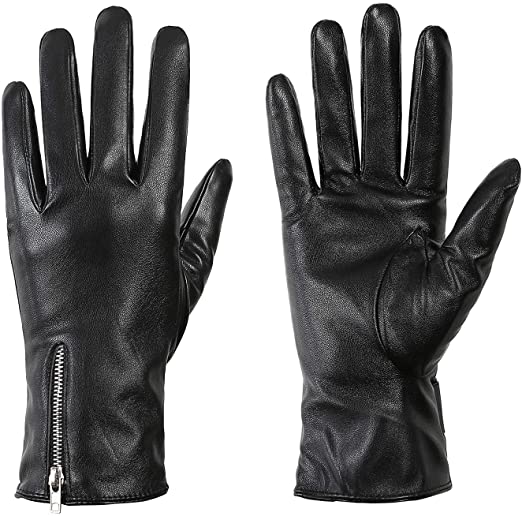When you get out into nature, you expose yourself to the random nature of the earth’s weather. Even if the forecast calls for sunny days, you may be in the middle of a downpour. That’s why having a waterproof tent is crucial for campers who go to different places every time (as opposed to those who always go to one area they know well). However, if you haven’t invested in a tent that can withstand wind or wet conditions, there are other ways to protect yourself and your friends from the rain.

How are tents made?
Before we get to the rainy weather tips, let’s look at how tents are made and why water gets through the materials of some tents.
It makes sense that you can’t make a tent from a single sheet of material. It is, therefore, necessary to sew the different parts together. The more seams the tent has, the less likely it is to be completely waterproof. This is because water always seeks the path of least resistance, and if you have ever seen it, you know that there will be small holes where the different sheets of the tent meet. This means there will be holes almost everywhere on two sides of the tent meeting, at the door, between the mesh and the zippers, at the windows, etc. You get the idea.
Here are the ways to avoid water accumulation in your tent that we’d like to emphasize:
- Having a tarp under your tent
- Have a transition area to your tent
- Maintain good ventilation
- Sealing the seams of your tent with a waterproofing product.
Now let’s take a look at each of these methods individually.
The Perfect Setup
When camping in the backcountry and bad weather is coming, the best thing you can do is use your surroundings to keep your tent dry.
You’ll also want to look for a place with high ground. A low ground will be more susceptible to flooding and will often be quickly saturated during heavy rainfall.
Suppose you plan to bring a tarp. Once you find the perfect spot to set up camp, use the surrounding brush and trees to hang a tarp over the tent. This will keep most of the rain away from your tent unless you are also dealing with high wind conditions, in which case the tarp will be useless.
Why it’s essential to have a groundsheet
 Tarps aren’t just a way to waterproof your camping experience. They can also make things much more enjoyable. Yet, the main reason people get them is that most tents leak at ground level. Sometimes, even if your tent is well insulated from water, the water underneath makes the ground cold and mushy, which deteriorates the whole experience.
Tarps aren’t just a way to waterproof your camping experience. They can also make things much more enjoyable. Yet, the main reason people get them is that most tents leak at ground level. Sometimes, even if your tent is well insulated from water, the water underneath makes the ground cold and mushy, which deteriorates the whole experience.
Tarps come in different sizes, shapes, and thicknesses. Generally, people use them as umbrellas (over the tent) and ground tarps (placed under the tent). If you’re camping on grass, you won’t need a thick tarp because the surface your tent sits on will already be soft enough. In this case, you will only need a waterproof tarp. If camping on rocky ground, make sure you choose a thick tarp so you don’t feel the rocks underneath you when you sleep.
Another thing you should check before buying a tarp online is to see the dimensions. Make sure you get a size slightly larger than your tent. This way, you will ensure that your tent is dry and have a small area around the tent that will not be muddy from all the rain. You can use this area to place your camping gear so that it doesn’t take up too much space inside the tent.
The tarps can also be used to put over the tent if you are not sure that the tent itself will withstand the rain. If you have enough storage space, our best advice is to buy two tarps over the tent and one for the ground. That way, you can enjoy a water-free stay wherever you go.
Transition Zones
Water can enter a tent through several different routes. One way is through the seams of your tent. The other way people forget to consider is through the campers’ clothes, shoes, and equipment. You will most likely get soaked if caught off guard when it rains. In these cases, people usually rush into the tent without realizing how much water they bring. That’s why it’s crucial to have a transition zone to keep water out of your tent.
Most tents have a dedicated area (implemented in the design) with a two-door system. It is designed so people can change in this area before going into the central part of the tent. This way, wet clothes and backpacks can stay in the transition area, keeping water away from where you’re sleeping. Plus, it prevents moisture buildup, our third aspect to address.
Proper ventilation
 Water is present in our bodies in large quantities as well, and if you put a few people in a tightly sealed tent during a thunderstorm, you’ll start to see drops of water on the walls in a few hours. This is not because of water slipping through the cracks but the moisture coming out of our lungs. That’s why, no matter what the weather, you should always keep a tent window open. Most tents have a particular type of window that can be opened without letting water in. This will also prevent CO2 build-up.
Water is present in our bodies in large quantities as well, and if you put a few people in a tightly sealed tent during a thunderstorm, you’ll start to see drops of water on the walls in a few hours. This is not because of water slipping through the cracks but the moisture coming out of our lungs. That’s why, no matter what the weather, you should always keep a tent window open. Most tents have a particular type of window that can be opened without letting water in. This will also prevent CO2 build-up.
When condensation is a real problem
While a bit of moisture is expected and is not serious, condensation can be a significant problem if you wake up in the morning and your sleeping bag and clothes are wet.
Condensation buildup is not a significant problem with all tents. Tents that have excellent insulation have minimal condensation. Another option is to leave windows and doors slightly vented to allow moisture to escape. However, if you’re camping in freezing conditions, this may not be an option. But in certain weather conditions, condensation can easily invade the interior of low-cost tents, whether or not the windows have been left open.
Use a seam sealer
This is one of the least essential ways to waterproof your tent because if you need a seam sealer, chances are your tent will leak from a place you’ve avoided. Nevertheless, having a sealer in your backpack wouldn’t add too much to the overall weight and can be crucial at the right time.
The last thing you want to do after hearing all these tips is to test it all out in your backyard, if possible. Wait for a rainstorm and set up your tent to see if such conditions prove too difficult for your gear.
If you want to see some of the best tents on the market, check out our Buyer’s Guide.
Conclusion
As you can see, there are many tips and tricks you can try on your next camping trip that will help keep your tent dry if bad weather is on the horizon. Of course, a tent upgrade can also make all the difference. Many top models now come with innovative designs that keep condensation and a heavy downpour from ruining your backcountry adventure.
The tent is designed to protect your clothes, food, supplies, and camping gear, but it’s all that stands between you and the harsh weather. A dry tent can be a life and death if you’re camping in freezing temperatures.
